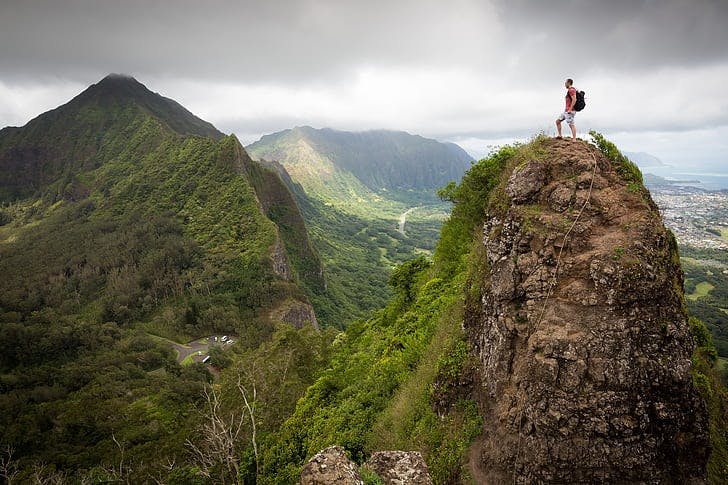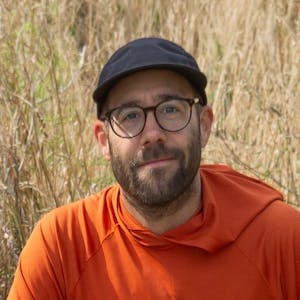A wrap of the biggest stories and best writing about the outdoors from New Zealand and around the world.
34-year-old Ian Snyder said he can’t believe he survived a 300-metre tumble from a hiking trail in Hawaii followed by being stranded for three days next to a stream. He said he had made “my peace with God.”
He said his hike was “pretty routine, then I got to the peak and it was steep. From there I continued along the peaks of the trail and it got more and more treacherous,” Snyder said.
Snyder said he doesn’t remember exactly when he fell and when he came to he was left wondering if he would live or die.
“I remember being close to the stream and at some point, I must have shifted locations, dragged myself along and got myself closer to the stream.” Snyder said. Because his left arm was broken, he said he had to reach across his body with his right hand to scoop up water to drink.
Allen Zhang, a paramedic with Honolulu Emergency Medical Services, said that when he spotted Snyder from the air, he couldn’t believe the hiker had survived such a fall. Read the full story from ABC News.
One year in, the iPhone’s satellite SOS feature is saving lives
When Apple introduced the ability to call for help via satellite in 2022, critics feared it would encourage hikers to be reckless. A year later, one of the United States’ busiest search and rescue outfits in LA County is praising it as a “game changer.”
“We have had quite a few [rescues related to the technology]” said Assistant Director of the Los Angeles County Sheriff’s Department (LASD), Mike Leum.
In the event of a crash or a fall, the iPhone and Apple Watch emit a loud sound, warning the owner that they’ll summon emergency services unless the user cancels the call.
If not cancelled, the device attempts to contact law enforcement via a cellular network. If there is no signal, it switches to a satellite notifying SAR of the incident, and sending GPS coordinates. The Apple SOS feature also provides two-way communication between the victim and first responders.
Critics worry the tech could lead to recklessness on the part of hikers. But for the most part, the LASD say that the tool hasn’t been abused. Read the full story from Backpacker.
One hundred tourist sites still closed this summer due to Cyclone Gabrielle damage
The Department of Conservation says about 100 tourist sites are still closed due to damage caused by Cyclone Gabrielle.
Director of Heritage and Visitors, Catherine Wilson, said staff are still cleaning up after more than 550 sites across the North Island were damaged in February. “The cyclone had a really big impact on our infrastructure across the North Island.”
Popular spots including Coromandel’s Cathedral Cove and the Te Henga Walkway outside Auckland, will remain shut over summer.
Wilson said it is an opportunity for Kiwis to visit places they have never been to before, or see old favourites from a new perspective, such as viewing Coromandel’s Cathedral Cove from a boat tour. Read more from RNZ.
Aussies lack hiking skills, survey shows
Our neighbour’s outdoorsy reputation may not be fully deserved, according to the AllTrails app study, with many too scared to go on walks.
Just one in three Australians know how to deal with getting lost, two in three reconsider going on trail walks due to safety concerns and only 38% feel confident with basic first aid when hiking according to research by the popular hiking app AllTrails.
“It is a bit surprising to see people do not know how to deal with [these obstacles],” Pitt Grewe, head of public land partnerships at AllTrails, said. “Australians have that reputation of loving outdoor activities and adventure.” The online survey was nationally representative and conducted by the consumer research agency Antenna. Read the full story from the Guardian.
Authorities want public help to identify man at illegal campsite
Police and the Department of Conservation are looking to speak to a man who inadvertently captured himself on a CCTV camera in Egmont National Park/Te Papa Kura-o-Taranaki.
Senior Ranger Cameron Hunt said stumbling upon the CCTV camera, which was not set up by authorities, was a stroke of good fortune. “When doing our scene examination of the campsite we found the CCTV camera hidden in a tree. Our suspect has filmed himself quite nicely.”
He said the man had built an elaborate campsite. “The person had built a plywood floor over punga logs and then erected a dome tent over that. They’d taken in car batteries and there was a little portable fridge and gas cooker and a bed all set up, so it was a reasonably established campsite.”
It was still a mystery what the man was doing in the national park. “We’re not really sure why or what the purpose of the campsite is at this stage, so that’s why we really want to track this guy down and find out what’s been going on.” Read more at RNZ.







